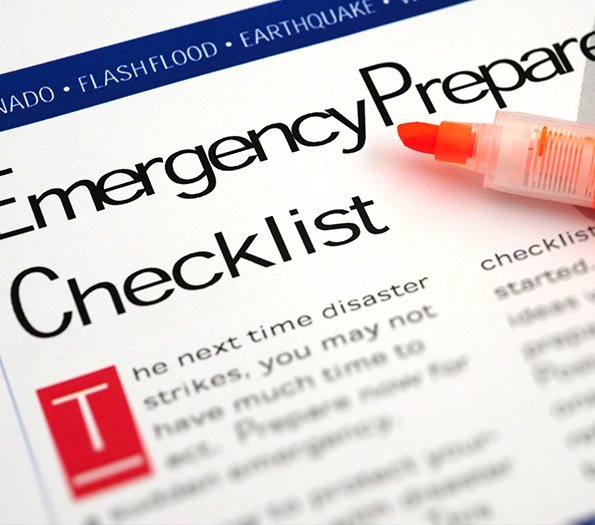Tips for Creating a Disaster Preparedness Plan
Posted Thursday, January 11th, 2018 by Sterling Volunteers Staff

2017 was a year filled with national and man-made disasters around the world. Hurricanes, floods and wildfires struck the U.S. hard this past year, especially during the last three months of the year. Most of these events are unexpected and leave very little time to prepare. Therefore, it is very important to start preparing and have a plan in place for future disasters that involve emergency response, nonprofit assistance and volunteers. Nonprofit organizations are critical parts of response and recovery efforts during and after emergencies. Hospitals, food banks, and shelters are just a few of the groups that provide assistance to those affected by disasters.
What is Disaster Preparedness?
Annelise Ferry of Galaxy Digital spoke with Cameron Waldner, CEO of Volunteer Houston, about the importance of disaster preparedness. Volunteer Houston matches volunteers and their passions with nonprofits and their needs. His organization has been part of the response and recovery effort following Hurricane Harvey. Waldner explained the goal of disaster preparedness “is to lessen the impact of disasters on vulnerable populations, to ready an organization for an influx of activity, and to design a coordinated plan that reduces the waste of resources, time, and efforts. Disaster preparedness has the potential save the maximum number of lives and property during a disaster, and it aims to return the affected populations to normalcy as quickly as possible.”
Volunteer managers join forces with local governments and emergency managers to provide assistance where needed. Having a coordinated disaster plan in place before they strike is vital to being able to help those that are in need quickly and easily.
Tips for Preparing for Disaster
Nonprofit organizations should have a work plan with specific documentation in place that prepares staff in the event of a disaster. Below are a few tips provided by Cameron Waldner for preparing a nonprofit organization in times of disaster.
- Create Continuity Plans: Nonprofits should create a business continuity plan. This plan should detail what tasks a nonprofit will do before a crisis, the processes to follow during the interruption of their regular services and the actions for restoring the nonprofit’s functionality of regular services after the emergency. Having a well-crafted business continuity plan will help nonprofits to ensure limited disruption of services to clients.
- Prepare Your Website and Social Media Pages: Having the right content ready to go on your nonprofit website during a disaster will assist those in need to get the help they require. Create disaster tips and information resources pages on your website that you can link to when disaster strikes. Make sure that your website has enough bandwidth to handle an influx of registering volunteers and other community assistance. Nonprofits should have planned content for their Facebook and Twitter pages ready to be posted during the time of emergency. This saves precious time preparing posts during the hectic disaster times.
- Set up Volunteer Plans: Part of the planning for disasters should include a plan on how to manage disaster volunteers, both those that are affiliated with a specific organization and those that spontaneously volunteer to help in the aftermath of a disaster. Affiliated volunteers are trained to respond during and after a disaster and may require less supervision. Untrained volunteers, or regular citizens, could be harder to manage if there is not a plan in place. Waldner shared that during Hurricane Harvey their organization had an influx of over 60,000 volunteers. He explained, “Before we took over managing the George R. Brown Convention Center, there was a line of volunteers around the building that would take them anywhere from two to three hours just to get in to By getting ahead of the messaging and working on it, we were able to schedule volunteer shifts and get that back under control.”
Be Prepared
It is vital for nonprofits to have a written disaster plan in place and that all staff members understand and can implement the program when a crisis strikes. These plans should be reviewed and updated as an organization evolves. If disaster plans are followed, it can make it easier for nonprofits to get back to regular service again as well as serve those affected by the disaster.
Is your volunteer organization ready for a disaster? What tips would you share to ensure your nonprofit has a disaster plan in place? Share your comments and let us know or connect with us on Twitter, Facebook and LinkedIn.
*This blog originally appeared on Galaxy Digital’s website.
